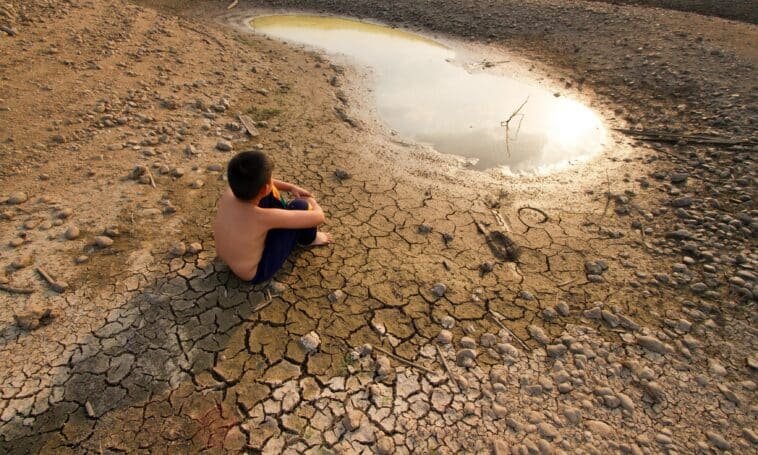Climate change in Pakistan has caused effects on the environment and people in Pakistan. As a result of ongoing climate change, the climate of Pakistan has become prone to change over the past several decades; this trend is expected to continue into the future. In addition to increased heat, drought, and extreme weather conditions in some parts of the country, the melting of glaciers in the Himalayas has impacted some of the important rivers of Pakistan. Between 1999 and 2018, Pakistan was ranked the 5th most affected country in terms of extreme climate caused by climate change.
Green House Gas Emissions
Pakistan’s GHG emissions are less than 1% of the world’s total, and compared to most countries’ greenhouse gas (GHG) emissions per person are well below average, at under 2 tons per year. In 2015 GHG emissions totaled 408 million tons of CO2eq; of which 43% was from agriculture in Pakistan; and 46% from energy in Pakistan, such as burning fuel for heat, power transport, and generating electricity.
Agricultural GHG is mostly methane and nitrous oxide. Methane comes from belching cattle, sheep, and goats; manure management; and rice cultivation. Nitrous oxide is mainly from agricultural soils due to the application of synthetic fertilizers, farmyard manure, and crop residue mixes after burning. Energy GHG is mostly carbon dioxide: in 2019 burning fossil gas, coal, and oil each emitted around 80 million tones.
Impacts on the natural environment
Temperature and Weather changes
While the effects of climate change are highly region-specific, it can be said with a high degree of confidence that mean surface temperatures are rising and extreme weather events will increase over time. These changes will disrupt expected environmental processes and human activity. The factors thought to affect climate change can exhibit variability too. Chaotic and periodic variations have been observed over different regions of the Earth and varying spans of time. A significant increase of 0.57°C in the annual mean temperature has been recorded for Pakistan from 1901 to 2000. While this mean change was less than the mean of the South Asian region, a more accelerated trend of warming of 0.47°C was from 1961 to 2007 indicating an increase in the rate of change in mean temperature. As with all climate and weather effects, the phenomena is region-specific where some regions indicate slightly lower averages. An overall increase in extreme temperatures is very likely and will significantly alter expected climate patterns. Further, most regions report increasing surface mean temperatures, indicating an overall warming trend.
In the hyper-arid plains, arid coastal areas, and mountain regions of Pakistan, an increase of 0.6°C–1.0°C in the mean temperature was recorded, with a decrease in summer and winter rainfall of 10-15% in the coastal belt and arid plains. An 18-32% increase in monsoon rainfall was recorded for sub-humid and humid areas of the country. In central Pakistan, a 3-5% decrease in cloud cover is said to have resulted in an increase in sunshine hours, and a recorded increase in mean temperature of 0.9°C. An increase in the aridity of northern regions, outside the monsoon belt range has also been reported.
In May 2022, a severe heatwave was recorded in Pakistan and India. The temperature reached 51°C. Climate change makes such heat waves 100 times more likely. Without climate change heatwaves, more severe than those that occurred in 2010 are expected to arrive 1 time in 312 years. Now they are expected to occur every 3 years.
The climate change projections of the AR5 for South Asia as a whole show that warming is likely to be above the global mean and climate change will impact the melting rate of glaciers and precipitation patterns for the region, particularly affecting the timing and strength of the monsoon rainfall. Consequently, this will significantly impact the productivity and efficiency of water-dependent sectors such as agriculture and energy.
Sea Levels Rise
Sea level rise along the Karachi coast is estimated at 1.1 mm per year (mm/year) for the period 1856 – 2000 according to the National Institute of Oceanography, Pakistan. According to IPCC estimates, the mean rate of global average sea level rise was 1.7 mm/year between 1901 and 2010, and 3.2 mm/year between 1993 and 2010. This change in sea level is thought to be due to two major processes, the thermal expansion of the oceans and the melting of glacier mass. It is difficult to predict SLR for the entire region of Pakistan since data is limited at the country level. While IPCC estimates predict a global mean SLR of 0.2–0.6 m by 2100, a rise of 0.7 m is predicted for the region of South Asia (which includes the Pakistan coast). This SLR will most likely affect low-lying coastal areas south of Karachi toward Keti Bander and the Indus River delta more than other regions of Pakistan. The impact of SLR on coastal areas and their resources may already be evident in the inundation of low-lying areas, degradation of mangrove forests, declining drinking water quality, and decrease in fish and shrimp productivity in those regions. The vulnerability of the Sindh coastal zone is considered higher than the Balochistan coastal areas because of the former’s flat tidal topography and higher population concentration with industrial activity along coastal areas (such as Karachi). This rise in sea level is also expected to increase the rate of soil erosion along the coastal belt. An 80% reduction in the amount of river sediment as compared to the early 20th century is reported and attributed to the extensive damming of the Indus River. The delta undergoes a natural subsidence process that ranges from a “sinking” of less than 1 mm/year to more than 10 mm/year. This rate is exceeded due to groundwater and petroleum extraction. Thus, the erosion, subsidence, and lack of sedimentation are resulting in the shrinking and sinking of the Indus River delta. According to an NGO head, 3 million acres of land containing many villages have been submerged in the coastal areas of the districts Thatta, Badin, and Sajawal over the past 40 years. This loss has resulted in the migration of over 1 million people from these districts to urban centers like Karachi. They further claimed that the construction of dams and diversion of river water has worsened the situation.
11 Top Most Electric Cars In Pakistan
Impact on People
Agriculture
Future projections for Pakistan are that major crop yields such as wheat and rice are expected to decrease significantly.
Migration
Due to extreme weather and uncertain economic outcomes, rural communities in Pakistan have been displaced in large numbers to major cities. Experts expect 20% of the population to move to major cities; current migration patterns included 700,000 people a year moving from rural to urban environments. Larger estimates, including major displacements because of extreme weather, suggest as many as 20 million migrants from rural to urban communities since 2010.
Solution for Climate Change in Pakistan
- Pakistan has recently launched an “Eco-System Restoration Fund” for supporting nature-based solutions to climate change and facilitating the transition towards environmentally resilient initiatives, covering afforestation and biodiversity conservation.
- Back in 2019 Government started a program named the billion tree tsunami. It was started to tackle the problem of deforestation and global warming due to the cutting of trees.
- *Government should build a dam in Thar to save water and ban people from cutting, and burning trees to keep the country clean and green.
*Shaheer Tirmizi is a Content Intern at Neemopani. He loves to write and is a car enthusiast.





